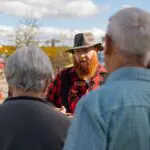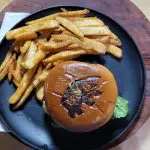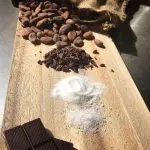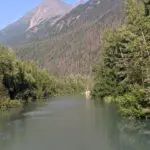Alaska Food History & The Only Anchorage Food Tour In Town
The need for a great meal, or at least an adequate one, has driven a lot of Anchorage’s history. In the early days, 1916 or so, roadhouses were still in operation along the Iditarod Trail and its branch line that ran past the mouth of Ship Creek. Two dollars got you a bunk for the night and a place to stake out your dog team. Two more dollars would get you a bowl of moose meat and beans for dinner and a stack of flapjacks for breakfast. It was somewhat limited fare for the travelling gourmand, to say nothing of monotonous. The White House Restaurant in Anchorage’s original Tent City along Ship Creek offered somewhat better plates, even though the dining space was just a large canvas tent.
Time passed, as it inevitably does. The Alaska Railroad moved in, bringing with it a raft of middle-class administrators and technical staff. These were the kind of folks who wanted something more than pan-fried venison. They wanted ribeye steaks and strawberry ice cream—all the fine things from Outside that the modern marvel of refrigerated shipping could provide. So much disposable income had to be spent somewhere, and it wasn’t long before good food in Anchorage became something you could rely on.
Fourth Avenue was the place to be back then. The Cheechako Tavern, the Anchorage Grill, Billy Butt’s Ice Cream Parlor (the place’s real name, believe it or not): these were the eateries serving hearty American fare of the day: Biscuits and gravy, pepper steak sandwiches, and the soon-to-be-ubiquitous hamburger. Menus of the day list all these dishes at less than a buck-fifty, which people fresh up from Outside no doubt thought was outrageously expensive. But you could walk down the street to the Corral Bar or the Frontier Saloon and drown your sorrows with a fifty-cent beer.
The 1950s and 1960s saw a boom in the restaurant business in Anchorage. There was money to be made in the postwar economy and Alaskans wanted to eat out and drink martinis like Frank Sinatra. Club Paris, the city’s original steakhouse, opened during these years, as did the Hofbrau, the Garden of Eatin’, and the Lucky Wishbone.
The construction of the Trans-Alaska Pipeline between 1975 and 1977 brought a massive influx of people to Anchorage, and their more modern tastes shaped the town’s culinary scene in the decades to come. For the first time, you had multiple dining options to choose from if you wanted chicken parmigiana, steak and king crab, or even just a humble BLT and fries. It was the generation of Alaskans born during these years who would grow up to open the first taprooms, fine-dining halls, distilleries, and food trucks that make life in Anchorage such a delightful place for eaters.
Through the decades there has always been a demand on the Last Frontier for a meal cooked by a professional chef, but now in the twenty-first century, Anchorage is really coming into its own as a foodie destination.
Dan and Chris Morris founded Alaskan Footprints to help share Anchorage’s food scene with visitors to Alaska’s cosmopolitan first city. Among the more unique things to do in Anchorage are their Tastes of the Last Frontier food tours. In Alaska you’re never far from a good story, and the Morris brothers will see to it that you get plenty of storytelling along with a phenomenal sampling of food and drink from world-class restaurants and bars like Moose A’la Mode, Fire Island Rustic Bakeshop, Humpy’s, Gelatte, and Tent City Taphouse.
They’ve put together some of the very best tours in Anchorage, and as lifelong Alaskans they’ve got the knowledge and the interpretive chops to make sure you come away with more than just a full belly and a pleasant beer buzz. You’ll learn about Anchorage’s unique history and its rise to prominence as a culinary destination. Did we mention you get to eat and drink?
Anchorage city tour packages aren’t hard to find, but food and drink tours with the personalized attention offered by Alaskan Footprints provide a unique view of one of America’s most mind-blowing culinary destinations.
-Kris Farman







